FAQ - Advanced Bathroom Queries
Do Toilets Go Straight to the Sewer

Were you aware that toilets do not directly connect to the sewer system? Contrary to what many think, a comprehensive network of piping and infrastructure is responsible for moving waste from our bathrooms to its ultimate destination.
In this article, we will delve into the fascinating journey of wastewater, debunking misconceptions along the way. Get ready to uncover the truth about toilet waste disposal and gain a mastery of the intricate processes involved.
Let’s dive in!
Key Takeaways
- Waste from toilets is transported through a network of pipes connected to the sewer system.
- Traditional sewer systems rely on gravity to move waste through the pipes.
- Alternative methods, such as septic tanks and composting toilets, can also be used for waste disposal.
- Regular sewer maintenance is necessary to prevent blockages and leaks in the sewer system.
How Do Toilets Transport Waste
Toilets transport waste through a series of pipes, and gravity plays a crucial role in this process. When we flush the toilet, the waste is pushed into the drainpipe, which is connected to a larger pipe called the sewer line. This sewer line is typically buried underground and transports the waste to a treatment facility or a septic tank.

Traditional sewer systems are the most common method of toilet waste disposal. These systems rely on gravity to move the waste through the pipes and eventually to the treatment facility. The waste goes through a series of pipes that gradually increase in size, allowing the force of gravity to assist in its flow. This method ensures that the waste is efficiently transported without the need for additional mechanical devices.
However, there are alternative methods to traditional sewer systems that are gaining popularity. One such alternative is the use of septic tanks. In this system, the waste is collected in a tank buried underground, where it undergoes a natural process of decomposition. The solid waste settles at the bottom of the tank, while the liquid waste is discharged into a drain field for further treatment.
Another alternative is composting toilets, which convert human waste into compost. These toilets use natural processes to break down the waste, turning it into a nutrient-rich material that can be used as fertilizer.
The Role of Pipes in the Wastewater Journey
When it comes to the journey of wastewater, pipes play a crucial role in transporting waste from toilets to the sewer system. This pipe network serves as the conduit for wastewater, ensuring that it flows efficiently and safely to its destination.

The connection between toilets and the sewer system is made through these pipes, allowing for the seamless transfer of waste.
Pipe Network for Wastewater
In the journey of wastewater, our toilets are connected to a comprehensive pipe network that plays a crucial role in transporting and managing the flow of waste. This pipe network, consisting of various pipes and fittings, is responsible for the safe and efficient conveyance of wastewater from our homes and businesses to treatment facilities or disposal sites.
The installation of these pipes requires careful planning and expertise to ensure proper alignment and connection. It involves excavating trenches, laying the pipes, and securing them with appropriate joints and supports.
Regular sewer maintenance is essential to keep this pipe network in optimal condition. It includes activities such as cleaning, inspection, and repair to prevent blockages, leaks, or other issues that could disrupt the flow of wastewater. By maintaining the integrity of the pipe network, we can ensure the effective management of wastewater and protect the environment.
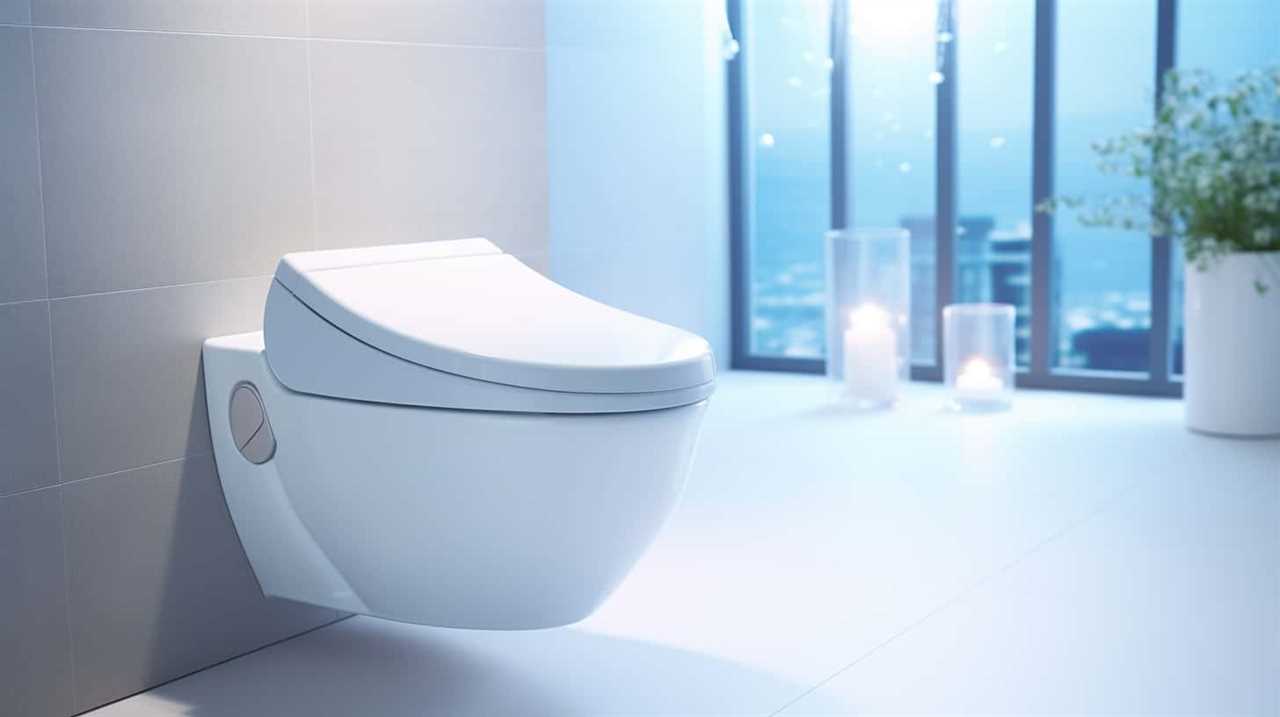
Toilet-To-Sewer Connection
As we delve into the topic of the toilet-to-sewer connection, it’s important to understand the pivotal role that pipes play in the journey of wastewater. Pipes are the crucial link between toilets and the sewer system, facilitating the movement of toilet waste and ensuring effective toilet waste management.
Here are three key aspects of the toilet-to-sewer connection:
- Pipe network: A network of pipes connects toilets in homes and buildings to the sewer lines underground. These pipes are designed to transport wastewater, including toilet waste, safely and efficiently to the sewer system.
- Gravity flow: Gravity plays a significant role in the movement of toilet waste through the pipes. The downward slope of the pipes allows the wastewater to flow naturally from the source to the sewer, without the need for additional pumps or power.
- Sewer maintenance: Proper maintenance of the sewer system is essential for the smooth operation of the toilet-to-sewer connection. Regular inspections and repairs of the pipes ensure that there are no blockages or leaks that could disrupt the flow of wastewater.
Understanding the toilet-to-sewer connection is crucial in comprehending the overall functioning of the sewer system.
Now, let’s explore the next section that focuses on understanding the sewer system in more detail.

Understanding the Sewer System
We flush our waste down the toilet, and it travels through a network of pipes to join the sewer system. Understanding the sewer system is crucial for effective wastewater treatment and sewage management.
The sewer system consists of a vast network of underground pipes that collect and transport wastewater from various sources, including toilets, sinks, showers, and industrial facilities. These pipes are typically made of durable materials such as PVC or concrete to withstand the pressure and corrosive nature of wastewater.
To give you a better idea of how the sewer system works, here is a table outlining the key components and their functions:
| Component | Function |
|---|---|
| Sewer Pipes | Transport wastewater |
| Manholes | Provide access to pipes |
| Lift Stations | Pump wastewater uphill |
| Wastewater Plant | Treat and purify water |
Sewer pipes connect to manholes, which serve as access points for maintenance and inspection. Lift stations are strategically placed along the sewer system to pump wastewater uphill when the natural slope is not sufficient. Finally, the wastewater plant is responsible for treating and purifying the water before it is discharged back into the environment.
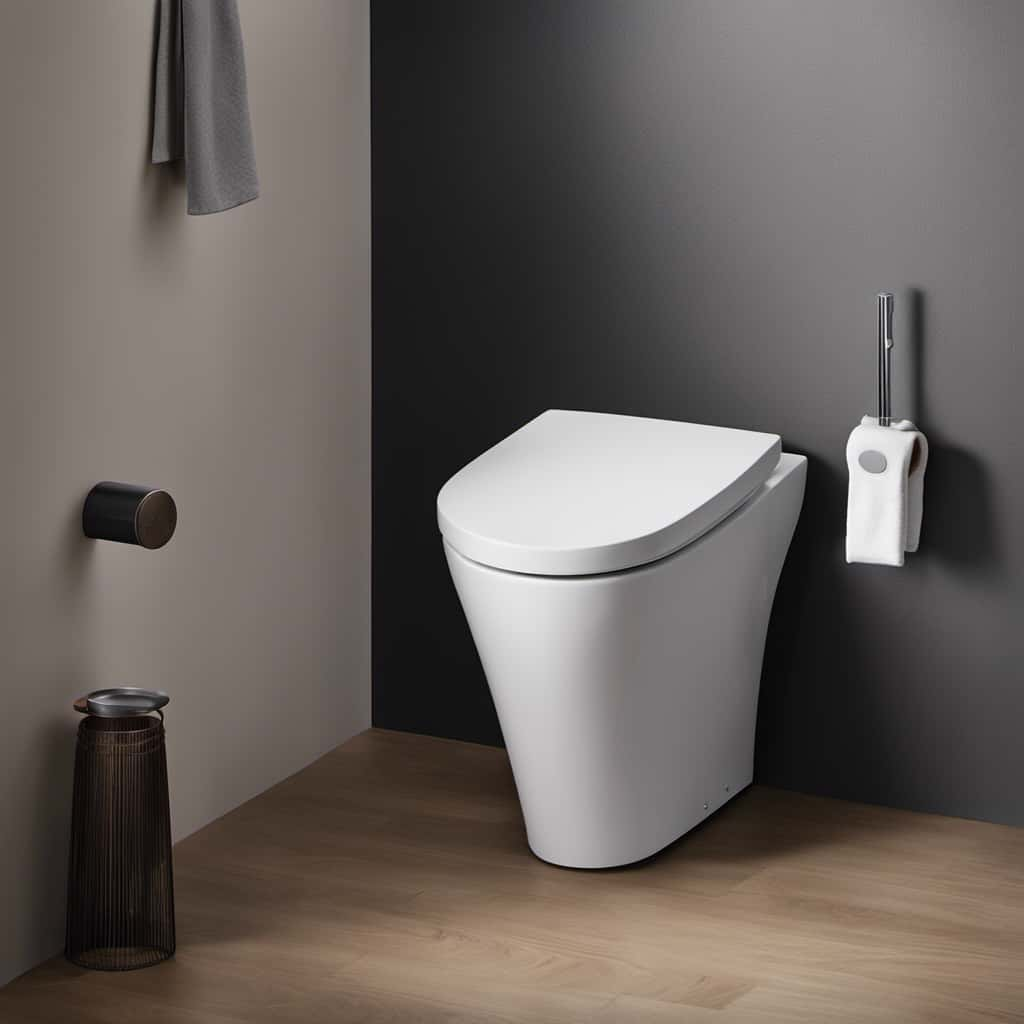
Understanding the sewer system and its components is essential for effective wastewater treatment and sewage management. Proper maintenance and regular inspections ensure the system functions properly, preventing blockages, leaks, and other issues that can lead to environmental contamination and health risks. With a well-maintained sewer system, we can ensure the safe and efficient management of our wastewater.
The Importance of Proper Plumbing Infrastructure
To ensure effective wastewater treatment and sewage management, it’s crucial to have proper plumbing infrastructure that can efficiently transport waste from toilets to the sewer system. Without a well-maintained plumbing system, the entire process of wastewater treatment and sewage management can be compromised.
Here are three key reasons why proper plumbing infrastructure is of utmost importance:
- Prevention of blockages: Proper maintenance of plumbing infrastructure, including regular cleaning and inspection, helps prevent blockages in the sewer system. Blockages can lead to backups and overflows, causing significant damage to the environment and posing health risks. By ensuring the smooth flow of waste, proper plumbing infrastructure minimizes the chances of blockages and promotes efficient wastewater treatment.
- Preservation of water quality: A well-functioning plumbing system plays a vital role in preserving water quality. Effective transportation of waste from toilets to the sewer system helps prevent contamination of water sources. By keeping the plumbing infrastructure in good condition, we can maintain the integrity of our water supply and protect public health.
- Enhancement of wastewater treatment: Proper plumbing infrastructure enables the timely and efficient transport of wastewater to treatment facilities. This allows for effective removal of pollutants and pathogens, ensuring that the treated water meets the required standards for safe disposal or reuse. Without proper plumbing infrastructure, the wastewater treatment process can be hindered, leading to inadequate treatment and potential environmental harm.
The Truth About Toilet Misconceptions
Let’s set the record straight on some common misconceptions about toilets.

First, we’ll explain how toilet plumbing actually works, debunking any myths along the way.
Then, we’ll answer the age-old question of where waste actually goes after we flush.
Get ready for a technical and detailed discussion that will leave you with a clear understanding of toilet mechanics and dispel any false beliefs you may have had.
Toilet Plumbing Explained
Toilet plumbing can often be misunderstood, but understanding the truth behind common misconceptions can help clarify how toilets are connected to the sewer system. Here are the key points to demystify toilet plumbing:

- Toilet waste disposal methods:
- Gravity-flush toilets: These toilets rely on the force of gravity to move waste through the plumbing system and into the sewer.
- Pressure-assisted toilets: These toilets use compressed air or water pressure to forcefully push waste out of the toilet bowl and into the sewer.
- Macerating toilets: These toilets have a built-in macerator that grinds waste into a fine slurry before pumping it into the sewer system.
- Toilet plumbing materials:
- PVC pipes: These pipes are commonly used in residential plumbing systems due to their durability and affordability.
- Cast iron pipes: These pipes are known for their strength and resistance to damage, making them ideal for commercial or high-traffic areas.
- Copper pipes: While less common in toilet plumbing, copper pipes are often used for water supply lines due to their corrosion resistance.
Understanding these aspects of toilet plumbing can help ensure a well-functioning and efficient system that effectively connects toilets to the sewer.
Common Toilet Myths Debunked
Continuing our exploration of toilet plumbing, let’s now delve into the debunking of common misconceptions surrounding toilets and shed light on the truth behind these prevalent beliefs.
When it comes to toilet maintenance, many people believe that using in-tank cleaning tablets is an effective way to keep the toilet clean. However, these tablets can actually damage the toilet’s components over time, leading to costly repairs. It’s recommended to opt for regular cleaning with a toilet brush and mild cleaners instead.
Another widely held belief is that flushing large amounts of toilet paper will cause clogs. In reality, modern toilets are designed to handle reasonable amounts of toilet paper, so there’s no need to be overly cautious.

Lastly, some individuals think that flushing while the lid is open creates a stronger flush. This is nothing more than a myth, as the flushing mechanism isn’t affected by the position of the lid.
Where Does Waste Go?
As we explore the truth behind toilet misconceptions, it’s important to understand what happens to waste once it’s flushed down the toilet. Contrary to popular belief, waste doesn’t simply go straight to the sewer. Instead, it goes through a carefully designed waste disposal process known as sewage treatment. This process involves several steps to ensure the safe and efficient disposal of waste.
Here are three key aspects of the sewage treatment process:
- Collection: Waste is collected through a network of pipes that connect to each household and building. These pipes transport the waste to a centralized treatment facility.
- Treatment: At the treatment facility, the waste undergoes a series of physical, chemical, and biological processes. These processes remove impurities and contaminants from the waste, making it safe to be discharged into the environment.
- Disposal: After treatment, the purified waste, also known as effluent, is either released into a nearby water body or used for irrigation purposes, depending on local regulations and environmental considerations.
Understanding these waste disposal methods and the sewage treatment process is crucial in ensuring the proper management of waste and protecting the environment.
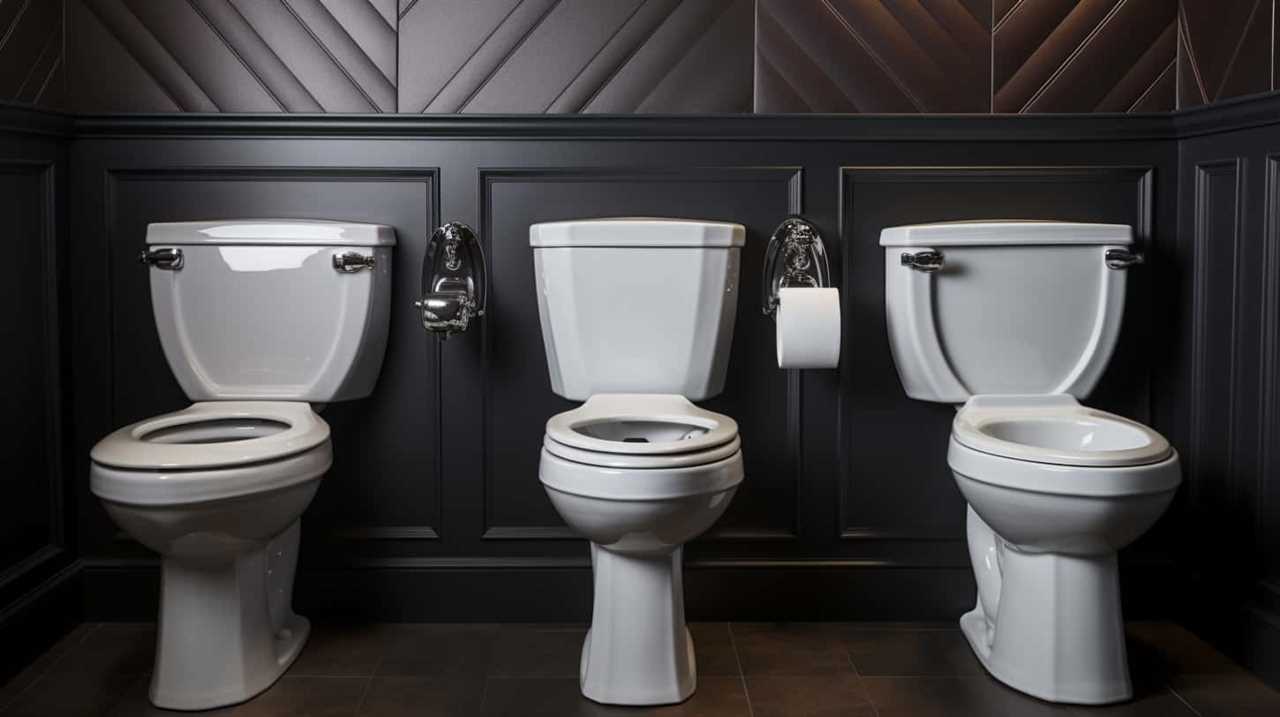
Exploring the Toilet-To-Sewer Process
We can explore how toilets are connected to the sewer system by understanding the process behind it. To begin, let’s delve into toilet waste management.
When we flush the toilet, the waste travels through a network of pipes. These pipes, known as sewer lines, are designed to transport the waste from our homes to the nearest sewage treatment plant.
Once the waste reaches the sewage treatment plant, the sewage treatment process begins. This process involves several stages to ensure the proper treatment and disposal of the waste.
Firstly, the wastewater passes through screens that remove large debris such as toilet paper and other solid waste. Next, the wastewater undergoes a sedimentation process where heavier particles settle to the bottom, forming a layer of sludge.
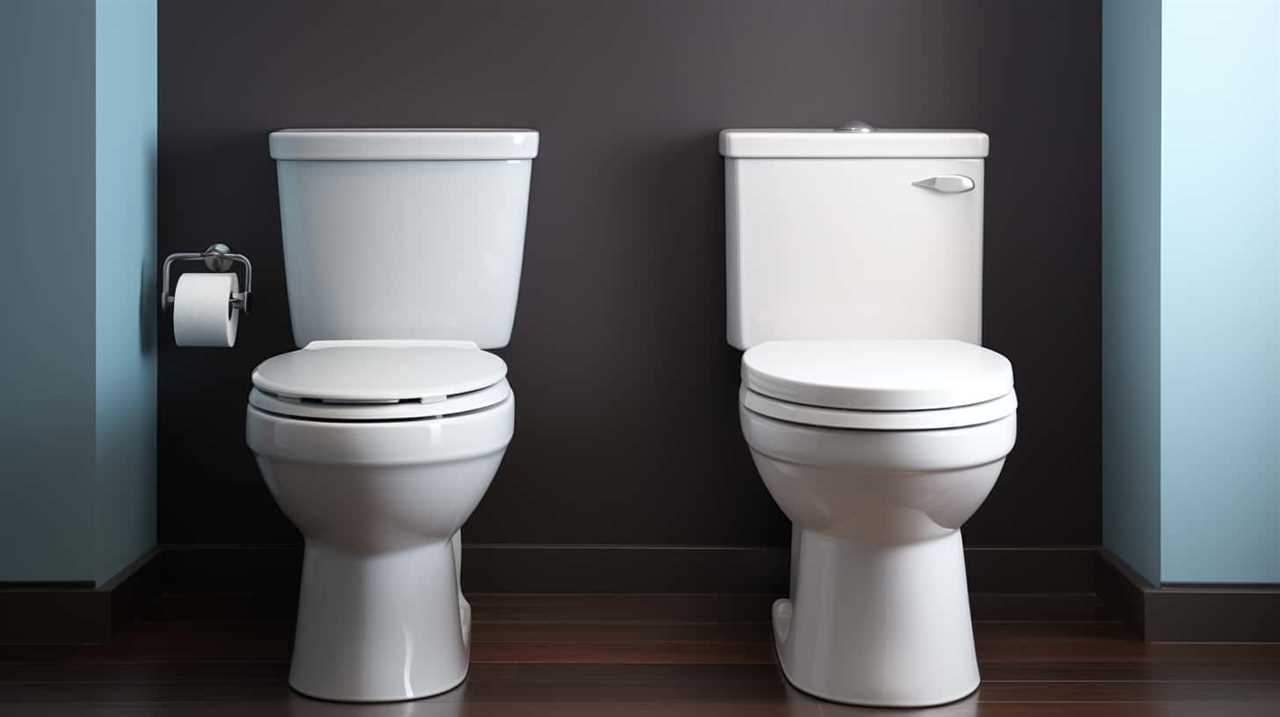
After sedimentation, the wastewater moves into the primary treatment phase. Here, chemicals are added to the water to help remove any remaining solids and pathogens. The water then flows into secondary treatment, where microorganisms are introduced to break down organic matter further. This stage helps to reduce the levels of organic pollutants and nutrients.
Finally, the water undergoes disinfection to eliminate any remaining pathogens. Various methods such as chlorine or ultraviolet light are used for this purpose. Once the water has been treated, it’s released back into the environment through rivers, lakes, or oceans, depending on local regulations.
What Happens After You Flush
After the waste undergoes the sewage treatment process at the plant, it’s important to understand what happens next. Once the solid waste and water mixture has been treated and separated, the water is released back into the environment. This water, known as effluent, goes through a series of additional treatment steps to ensure it meets the required quality standards.
Here is what happens to the water after you flush:
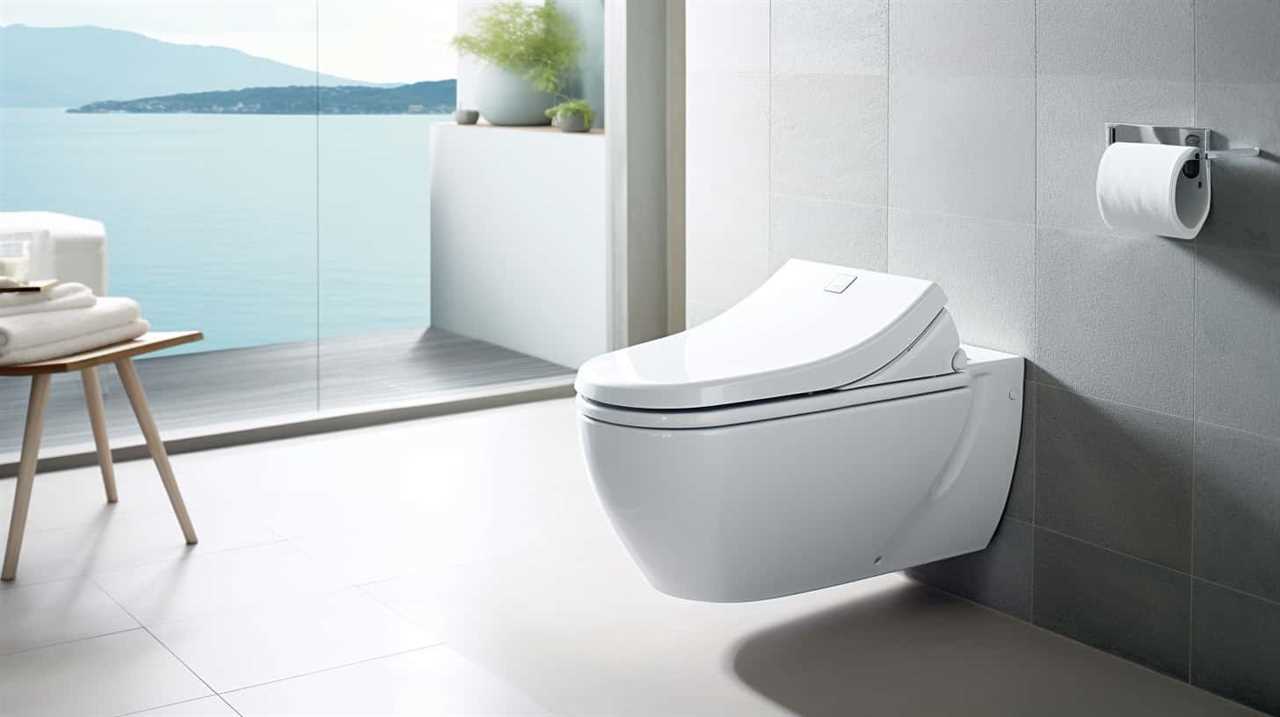
- Disinfection: The effluent is treated with chemicals or exposed to ultraviolet light to kill any remaining bacteria and pathogens.
- Filtration: The water is passed through filters to remove any remaining suspended particles, such as sediment or debris.
- Chlorination: To prevent the growth of bacteria during transportation, a small amount of chlorine may be added to the water.
After these processes, the treated water is typically discharged into a nearby body of water, such as a river or ocean. This ensures that the water is returned to the environment in a safe and environmentally responsible manner. It’s important to note that the discharge of treated water from water treatment facilities is regulated to protect the environment and public health.
Transitioning into the subsequent section about the environmental impact of wastewater disposal, it’s crucial to recognize the potential consequences of improper toilet waste management.
The Environmental Impact of Wastewater Disposal
Upon understanding the treatment process and release of water after flushing, it’s important to address the environmental impact of wastewater disposal. The wastewater treatment process plays a crucial role in minimizing water pollution concerns. Once flushed, wastewater travels through a network of pipes to a treatment plant. At the plant, the wastewater undergoes a series of treatment processes to remove contaminants and pollutants. These processes typically involve physical, chemical, and biological methods.
Physical processes, such as sedimentation and filtration, remove solid particles from the wastewater. Chemical processes, such as disinfection with chlorine or ultraviolet light, help eliminate pathogens and harmful bacteria. Biological processes, such as activated sludge or trickling filters, use microorganisms to break down organic matter. After the treatment process, the water is released into a body of water, usually a river or ocean, where it undergoes further dilution and natural purification.

However, it’s important to note that while the treatment process significantly reduces pollutants, it doesn’t eliminate them entirely. Therefore, proper wastewater disposal is essential to prevent adverse environmental impacts, including water pollution.
Debunking Myths About Toilet Waste Disposal
Let’s debunk some common myths about toilet waste disposal. There are several misconceptions surrounding toilet waste management that need to be clarified. Here are three important points to consider:
- Myth 1: Flushing toilets sends waste directly to the sewer. Contrary to popular belief, toilets don’t have a direct connection to the sewer. Instead, they’re connected to a network of pipes that transport the waste to a sewage treatment facility. This facility processes the waste before it’s released back into the environment.
- Myth 2: Toilet waste is harmful to the environment. While it’s true that untreated wastewater can have negative environmental impacts, modern sewage treatment technologies effectively remove harmful substances from toilet waste. These treatment processes remove pollutants, bacteria, and other contaminants, ensuring that the water released back into nature is safe for the ecosystem.
- Myth 3: Using a toilet consumes excessive amounts of water. With the advancement of water-saving technologies, toilets have become more efficient in their water usage. Dual-flush toilets and low-flow toilets are designed to minimize water consumption without compromising their functionality. These toilets use significantly less water per flush, contributing to water conservation efforts.
Conclusion: the Final Destination of Toilet Waste
Toilet waste goes through a network of pipes before it reaches a sewage treatment facility. The process of waste disposal is a crucial component of maintaining public health and safeguarding the environment. Once flushed, the waste travels through a system of underground pipes that are specifically designed to transport sewage. These pipes are made of durable materials such as PVC or cast iron to ensure the safe and efficient transport of waste.
The network of pipes is carefully constructed, following a predetermined path that leads to the sewage treatment facility. This ensures that the waste is directed away from residential areas and other public spaces, minimizing the impact on the community.
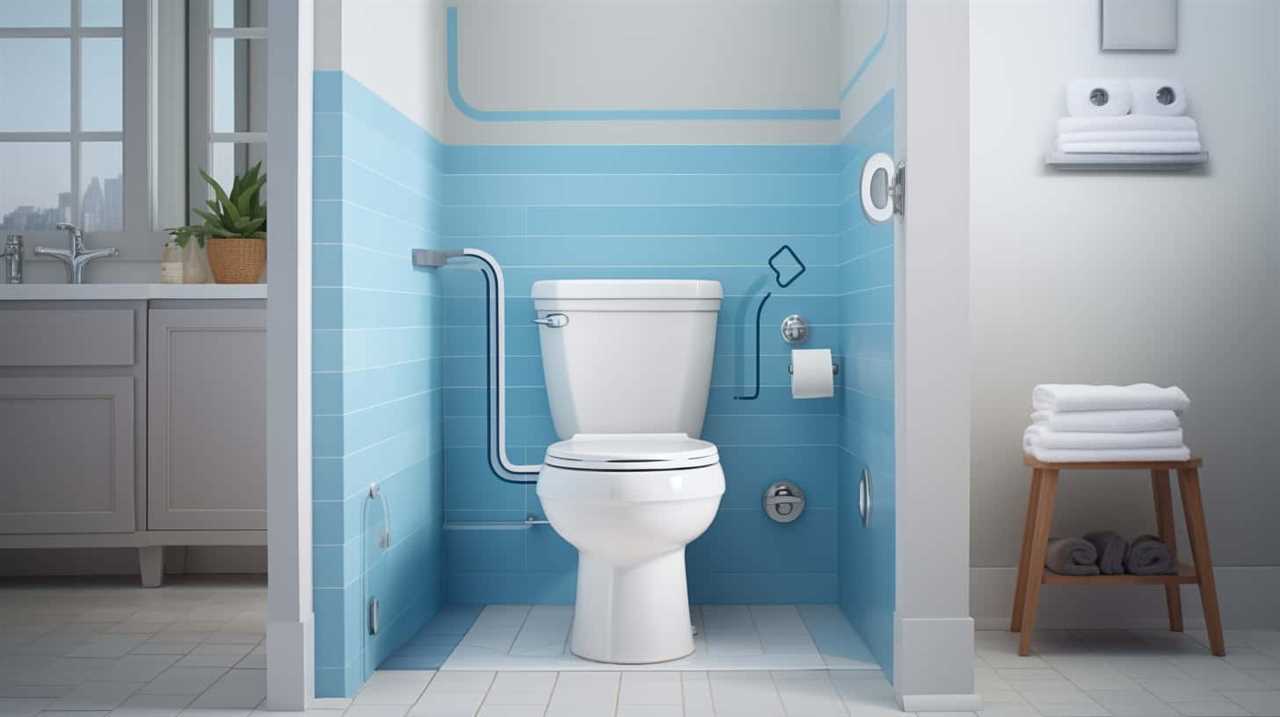
At the sewage treatment facility, advanced techniques and processes are employed to treat the waste and remove harmful contaminants. The facility utilizes a combination of physical, chemical, and biological processes to separate solid waste from liquid waste and break down organic matter. This ensures that the waste is thoroughly treated before it’s ultimately discharged into the environment.
The proper disposal of toilet waste is of utmost importance in maintaining public health. Inadequate waste disposal methods can lead to the spread of diseases and the contamination of water sources. By ensuring that toilet waste is directed to sewage treatment facilities, we can effectively manage and mitigate the impact on public health and the environment.
Frequently Asked Questions
Are There Any Risks or Dangers Involved in the Toilet-To-Sewer Process?
When considering the toilet-to-sewer process, it’s important to examine the risks and dangers involved.
There are several potential hazards that can arise during this process. These include the risk of blockages in the plumbing system, which can lead to overflowing toilets and potential damage to the infrastructure.

Additionally, there’s the danger of sewage leaks or backups, which can pose a serious health risk due to the presence of harmful bacteria and pathogens.
It’s crucial to ensure proper maintenance and regular inspections to mitigate these risks.
How Does the Sewer System Handle Heavy Rainfall or Flooding?
When heavy rainfall or flooding occurs, the sewer system faces challenges in handling the increased volume of water. The impact on wastewater treatment can be significant, as the system may become overwhelmed and unable to effectively process and treat the wastewater.
This underscores the importance of regular sewer system maintenance to ensure its functionality during such events. Proper maintenance, including regular inspections and cleaning, can help mitigate the risks associated with heavy rainfall and flooding.

Can Flushing Certain Items Down the Toilet Cause Clogs or Damage to the Plumbing System?
When considering clog prevention and the environmental impact of flushing certain items down the toilet, it’s crucial to understand the potential damage they can cause to the plumbing system. Flushing items such as wipes, cotton balls, or feminine hygiene products can lead to blockages in the pipes, leading to costly repairs and disruptions to the sewer system.
Additionally, these items can end up in our waterways, causing harm to the environment. Proper disposal of these items is essential for maintaining a functional plumbing system and preserving our ecosystems.
What Measures Are Taken to Ensure the Proper Treatment and Disposal of Wastewater?
Water treatment processes are crucial for ensuring the proper treatment and disposal of wastewater. These processes involve several steps, including primary treatment, where solid particles are removed, and secondary treatment, which uses biological processes to further purify the water.
Are There Any Alternative Methods or Technologies Being Developed for Toilet Waste Disposal?
Toilet waste alternatives and innovative toilet technologies are a topic of great interest. We’re constantly exploring ways to improve waste disposal methods. Research and development in this field are focused on finding more efficient and environmentally friendly solutions.
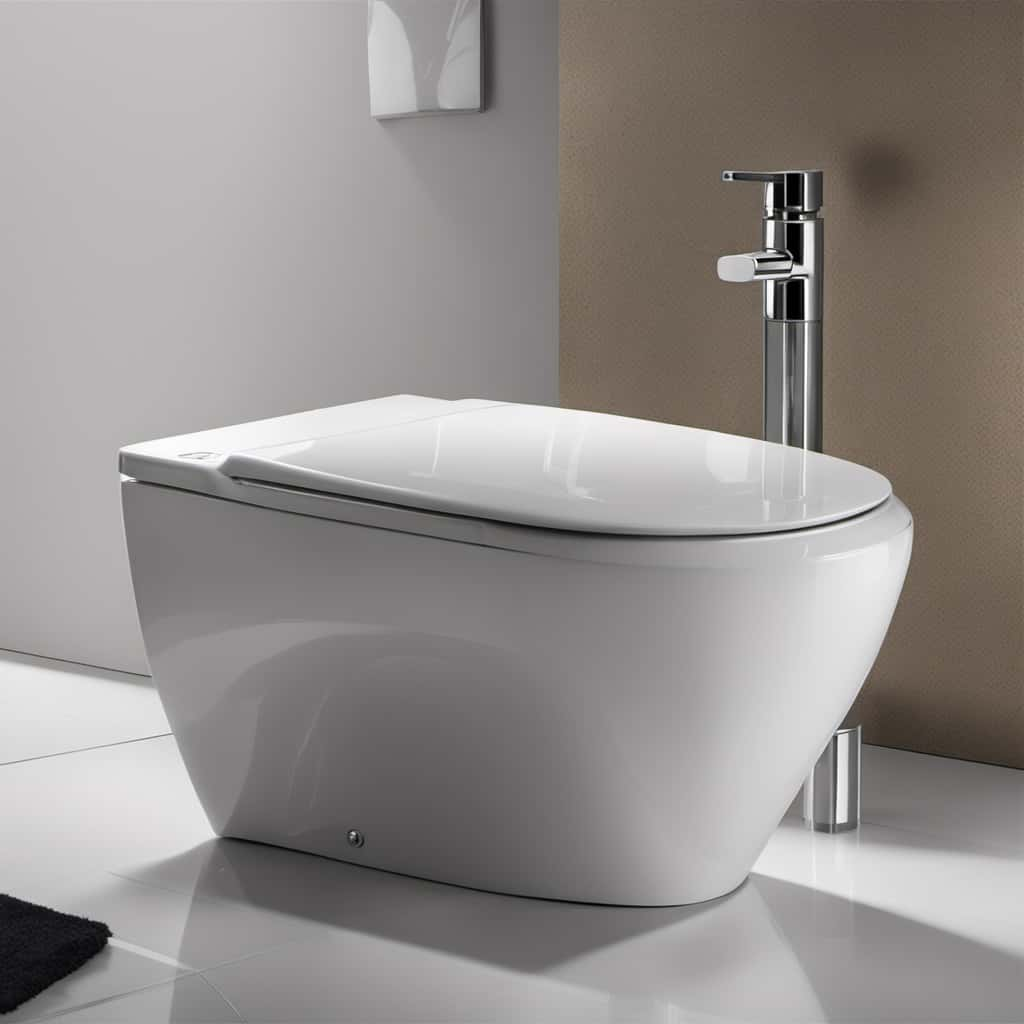
There are promising advancements being made, such as composting toilets and waterless toilets, which aim to reduce water consumption and transform waste into valuable resources. These innovative approaches are crucial for sustainable and responsible waste management.
Conclusion
In conclusion, the journey of toilet waste takes us through a complex network of pipes and into the sewer system. The proper plumbing infrastructure plays a crucial role in ensuring the efficient disposal of wastewater.
Contrary to common misconceptions, toilets don’t transport waste straight to the sewer. The environmental impact of wastewater disposal shouldn’t be overlooked.
By debunking myths and understanding the truth about toilet waste disposal, we can better appreciate the final destination of this essential process.

With an impeccable eye for detail and a passion for bathroom-related, Ava leads our editorial team gracefully and precisely.
Under her guidance, Best Modern Toilet has flourished as the go-to resource for modern bathroom enthusiasts. In her free time, you might find Ava exploring antique shops and looking for vintage bathroom fixtures to add to her collection.
FAQ - Advanced Bathroom Queries
Where Can You Not Flush Toilet Paper

We’ve all experienced it – facing a toilet, pondering whether we should flush that bundle of toilet paper or not.
Well, here’s a surprising fact: in some places, you can’t flush it at all! From public restrooms to older plumbing systems, there are several situations where tossing that tissue down the drain is a big no-no.
In this article, we’ll explore where you can and can’t flush toilet paper, so you never find yourself in a messy situation again.
Key Takeaways
- Flushing toilet paper in public restrooms can have severe environmental impacts, clog pipes, and strain wastewater treatment facilities.
- Older plumbing systems may not be able to handle flushing toilet paper, leading to clogging and backups in the pipes.
- Many countries with inadequate sewage infrastructure cannot handle flushing toilet paper, leading to clogged pipes, sewage backups, and contaminated water sources.
- Flushing non-biodegradable items can cause blockages in septic systems and disrupt the natural balance of the tank, so it is important to use waste bins and properly dispose of hazardous materials.
Public Restrooms
In public restrooms, it’s important to remember that toilet paper shouldn’t be flushed in certain situations. Proper hygiene practices in public restrooms require us to dispose of toilet paper appropriately. Flushing toilet paper may seem convenient, but it can have severe environmental impacts.

When flushed, toilet paper can clog pipes and sewage systems, causing costly repairs and potential health hazards. Additionally, flushing toilet paper contributes to water pollution and strain on wastewater treatment facilities. By not flushing toilet paper in public restrooms, we can help conserve water, reduce maintenance costs, and protect the environment.
Instead, it’s recommended to use the provided waste bins for proper disposal. Let’s all be mindful of our actions and practice responsible hygiene practices in public restrooms for the benefit of ourselves and the environment.
Older Plumbing Systems
Our older plumbing systems may not be able to handle the flushing of toilet paper. This is due to their historical significance and the environmental impact it can have.
Many older buildings still have outdated plumbing systems that weren’t designed to handle the modern use of toilet paper. These systems were built at a time when people used alternative methods such as bidets or reusable cloths.

Flushing toilet paper in these older systems can lead to clogging and backups in the pipes, causing costly repairs and potential damage to the environment. It’s important to be aware of the limitations of these older plumbing systems and to dispose of toilet paper in the appropriate waste receptacles to prevent any issues.
Countries With Inadequate Sewage Infrastructure
Many countries around the world have inadequate sewage infrastructure that cannot handle the flushing of toilet paper. This poses significant challenges for hygiene practices and has a severe environmental impact. In countries where the sewage infrastructure is inadequate, flushing toilet paper can lead to clogged pipes, sewage backups, and contaminated water sources.
To illustrate the severity of the issue, let’s take a look at the table below, which highlights a few countries facing this problem:
| Country | Hygiene Practices Affected | Environmental Impact |
|---|---|---|
| Haiti | Limited access to clean water and sanitation facilities | Contamination of water sources and increased risk of diseases |
| India | Lack of proper sanitation facilities in rural areas | Pollution of rivers and groundwater |
| Cambodia | Insufficient sewage treatment plants | Water pollution and degradation of ecosystems |
It’s clear that the inadequate sewage infrastructure in these countries not only poses challenges to hygiene practices but also has a detrimental impact on the environment. Efforts should be made to improve and upgrade the sewage systems to ensure proper waste management and protect public health.

Portable Toilets
Moving forward from the discussion on countries with inadequate sewage infrastructure, let’s now explore the topic of portable toilets and their role in addressing the challenges related to proper waste management and hygiene practices.
Portable toilets play a crucial role in providing sanitation solutions in various situations. Here are four key points to consider:
- Temporary Events: Portable toilet rental is essential for outdoor events like concerts, festivals, and sports matches. They ensure that attendees have access to clean and convenient restroom facilities.
- Construction Sites: Portable toilets are commonly used on construction sites where permanent facilities are unavailable. They help maintain proper hygiene practices and ensure the well-being of workers.
- Disaster Relief: During natural disasters or emergencies, portable toilets are vital in providing immediate sanitation solutions in affected areas, preventing the spread of diseases.
- Outdoor Activities: Whether it’s camping, hiking, or boating, portable toilets are essential for maintaining cleanliness and hygiene in remote outdoor locations.
Septic Tanks
Let’s now delve into the topic of septic tanks and their role in addressing waste management and hygiene practices, particularly in relation to portable toilets.
Septic tanks play a crucial role in waste disposal and treatment, providing an efficient and eco-friendly solution for waste management. When it comes to portable toilets, septic tanks are often used to collect and store waste until it can be properly disposed of or treated.

One of the key considerations with septic tanks is their environmental impact. Properly maintained septic tanks can minimize the release of harmful substances into the environment, protecting both human health and ecosystems.
Maintenance requirements for septic tanks include regular pumping, inspection, and proper use of additives to promote the breakdown of organic waste. By adhering to these maintenance practices, septic tanks can effectively manage waste and maintain a healthy environment.
Frequently Asked Questions
How Often Should Public Restrooms Be Cleaned to Ensure Proper Hygiene and Prevent the Spread of Diseases?
We clean public restrooms frequently to maintain proper hygiene and prevent the spread of diseases. Our disease prevention measures include regular cleaning, disinfecting surfaces, and ensuring adequate supply of soap and hand sanitizers.
What Are Some Alternative Options for Disposing of Toilet Paper in Areas With Older Plumbing Systems?
In areas with older plumbing systems, waste disposal can be a challenge. However, there are environmentally friendly alternatives to flushing toilet paper. Let’s explore some options for proper disposal that won’t harm the plumbing.

Can You Provide a List of Countries With the Most Advanced Sewage Infrastructure?
A list of countries with the most advanced sewage infrastructure includes Japan, Germany, and Singapore. These countries have invested in modern technology to efficiently manage wastewater. Bidets are another alternative to toilet paper, with benefits like improved hygiene and reduced environmental waste.
How Are Portable Toilets Emptied and Maintained to Ensure Proper Sanitation?
When it comes to portable toilet maintenance, ensuring proper disposal of waste is crucial. We take the responsibility seriously, employing strict protocols to empty and maintain portable toilets, guaranteeing optimal sanitation for everyone.
What Are the Common Problems That Can Occur With Septic Tanks and How Can They Be Prevented or Resolved?
Common septic tank problems include blockages, leaks, and overflows. Regular septic tank maintenance, such as pumping and inspecting, can help prevent these issues. It’s important to follow proper waste disposal guidelines to avoid further complications.
Conclusion
In conclusion, while it may seem strange to some, there are various places where flushing toilet paper isn’t advisable. Public restrooms, older plumbing systems, countries with inadequate sewage infrastructure, portable toilets, and septic tanks all fall into this category.

It’s crucial to be mindful of these restrictions to prevent clogging and damage to the plumbing systems. So next time you find yourself in one of these situations, remember to dispose of your toilet paper properly and help keep the pipes flowing smoothly.
With an impeccable eye for detail and a passion for bathroom-related, Ava leads our editorial team gracefully and precisely.
Under her guidance, Best Modern Toilet has flourished as the go-to resource for modern bathroom enthusiasts. In her free time, you might find Ava exploring antique shops and looking for vintage bathroom fixtures to add to her collection.
FAQ - Advanced Bathroom Queries
How Do You Flush the Toilet in Italy

If you have ever been in Italy and faced with a confusing toilet, not sure how to flush it, do not worry! We are here to help you navigate the complexities of Italian toilet flushing systems.
In this article, we will provide a step-by-step guide on how to properly flush a toilet in Italy, highlighting common mistakes to avoid and offering tips for using public restrooms.
Prepare to master the art of toilet flushing in Italy with our informative and precise instructions.
Key Takeaways
- In Italy, there are different types of toilets, including traditional flush toilets, dual-flush toilets for water conservation, bidets, squat toilets in public restrooms, and high-tech toilets with advanced features.
- The flushing mechanisms vary, with traditional flush toilets having a handle or button, dual-flush toilets having separate buttons for full and half flush, bidets having a separate faucet or lever for water control, squat toilets being flushed manually by pouring water, and high-tech toilets having electronic buttons or sensors.
- Water conservation is a priority, with dual-flush toilets offering different flushing options, some toilets having water-saving modes for liquid waste, bidets using less water compared to toilet paper, squat toilets requiring less water for flushing, and high-tech toilets having water-saving features like low-flow flushes.
- Toilet etiquette in Italy includes throwing toilet paper in the bin, using bidets for personal hygiene, maintaining proper squatting posture for effective use of squat toilets, high-tech toilets having additional features like heated seats or air dryers, and leaving the toilet clean and tidy being considered polite.
Types of Toilets in Italy
In Italy, we commonly encounter both manual and automatic toilets, with manual flushes being more prevalent. Historical toilets in Italy have played a significant role in shaping the country’s bathroom culture.

One unique feature found in many Italian bathrooms is the bidet, which is often located next to the toilet. The bidet is used for personal hygiene purposes and is a traditional fixture in Italian households. It provides a convenient way to clean oneself after using the toilet. The bidet’s popularity in Italy can be traced back to its introduction in the 18th century and its association with hygiene and cleanliness.
Today, bidet use is still common in Italy, although modern toilets with bidet functions integrated into the seat are becoming increasingly popular.
Understanding the Flushing Mechanisms
To understand the flushing mechanisms in Italian toilets, let’s explore the different types of flushes commonly found:
- Dual Flush: Many modern Italian toilets are equipped with a dual flush system, allowing users to choose between a partial flush for liquid waste and a full flush for solid waste. This not only promotes water conservation but also helps prevent toilet clogging.
- Push Button: Another common flushing mechanism in Italian toilets is the push button. This type of flush is often found in public restrooms and offers different buttons for different water volumes, ensuring efficient flushing.
- Lever Flush: Traditional Italian toilets may still use the lever flush mechanism, where a lever on the side of the toilet tank is pressed to initiate the flush. This mechanism is straightforward and reliable, but it’s important to be mindful of the amount of force applied to avoid excessive water consumption.
Understanding the different flushing mechanisms in Italian toilets can help prevent toilet flushing problems and promote proper toilet flushing etiquette.
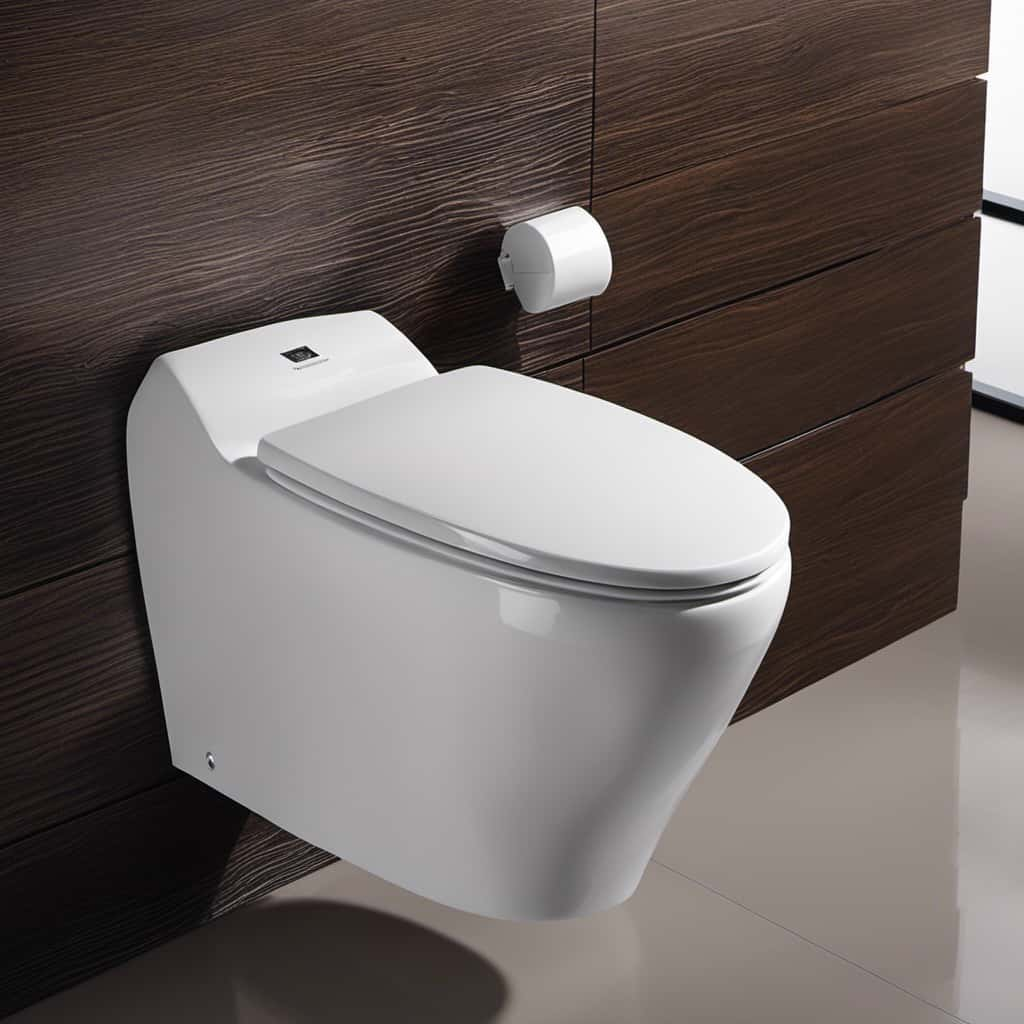
Step-By-Step Guide to Flushing a Toilet
We start by pressing the appropriate button or lever to initiate the flushing process in an Italian toilet. The location of the flush button or lever may vary depending on the design of the toilet. Once pressed, the flushing mechanism activates, releasing a powerful stream of water into the bowl. This water flow helps to remove waste and cleanse the toilet bowl. To ensure effective toilet cleaning and water conservation, it is important to use the appropriate amount of water for each flush. Some toilets may have dual-flush systems, offering a choice between a partial flush for liquid waste and a full flush for solid waste. This option allows for greater water conservation by using less water for liquid waste disposal. Here is a step-by-step guide to flushing a toilet in Italy:
| Step | Action |
|---|---|
| 1 | Locate the flush button or lever |
| 2 | Press the button or push the lever |
| 3 | Allow the flushing mechanism to activate |
| 4 | Ensure effective toilet cleaning and water conservation by using the appropriate amount of water for each flush |
| 5 | Consider using the dual-flush option, if available, for greater water conservation |
Common Mistakes to Avoid When Flushing
One mistake to avoid when flushing a toilet in Italy is failing to ensure proper water conservation by using excessive amounts of water. It’s important to follow toilet flushing etiquette to prevent unnecessary wastage.
Here are three common flushing mistakes to avoid:
- Flushing unnecessary items: Don’t flush items such as sanitary napkins, wipes, or cigarette butts, as they can clog the toilet and cause plumbing issues.
- Overloading the toilet: Avoid flushing large amounts of toilet paper or excessive waste at once, as it may lead to clogging and require professional assistance to fix.
- Ignoring flushing problems: If you notice a weak flush, slow drainage, or frequent clogs, don’t ignore these signs. Troubleshoot common flushing problems promptly to prevent further issues and costly repairs.
Tips for Using Public Restrooms in Italy
When using public restrooms in Italy, it’s important to consider the cleanliness and availability of necessary amenities. Italy has its own cultural differences in bathroom etiquette that visitors should be aware of.
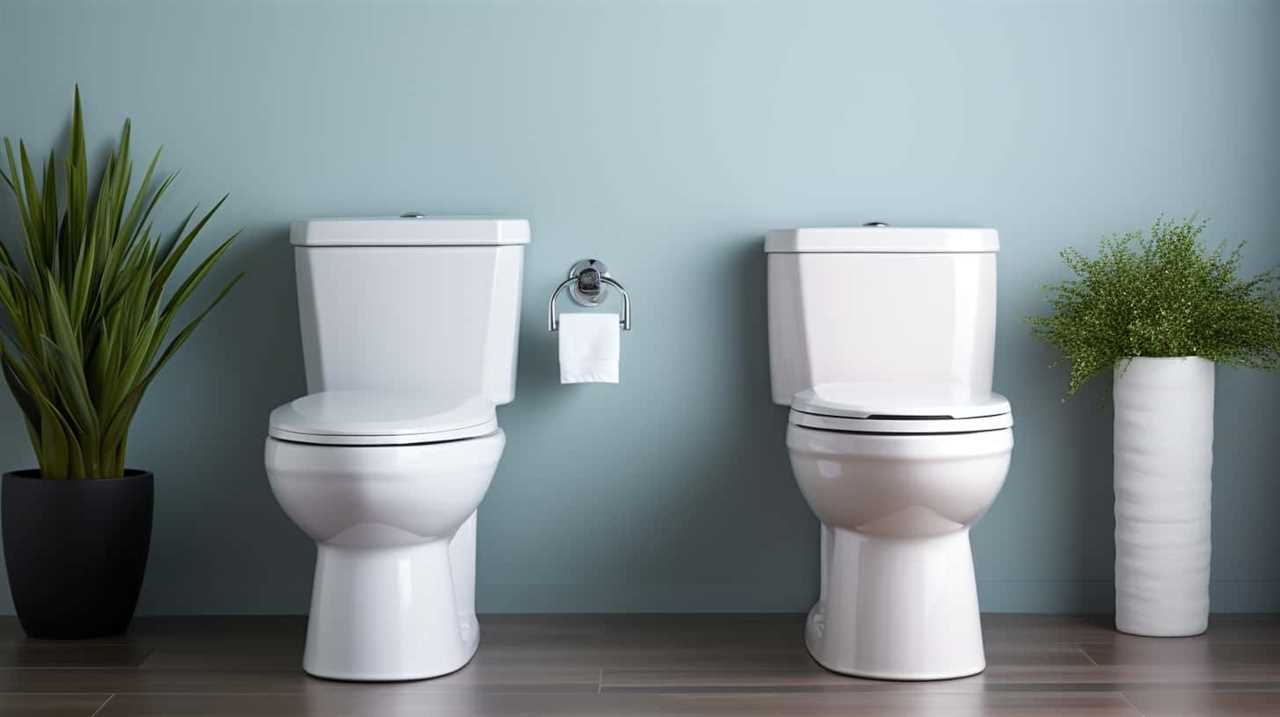
To ensure a pleasant and hygienic experience, here are some tips for finding clean public restrooms in Italy:
- Look for establishments like cafes, restaurants, or hotels, as they usually have better-maintained facilities.
- Carry tissues or toilet paper with you, as some public restrooms may not provide them.
- Be prepared to pay a small fee to use certain public restrooms, especially in busy tourist areas.
- Avoid using public restrooms in train stations or other high-traffic areas, as they tend to be less clean.
Frequently Asked Questions
Are Bidets Commonly Found in Italian Toilets?
Bidets are commonly found in Italian households. They are used for personal hygiene after using the toilet. Bidet usage varies in different regions of Italy, but it is a common fixture in most homes.
What Do the Different Symbols on the Flushing Buttons or Levers Mean?
Different symbols on flushing buttons or levers in Italian toilets indicate various types of flushing mechanisms. Common misconceptions about these symbols can lead to confusion. It is important to understand their meanings for proper operation.
Is It Necessary to Hold Down the Flushing Mechanism for a Longer Time in Italy?
We found that in Italy, it is not necessary to hold down the flushing mechanism for a longer time. However, it’s important to note that certain toilets may have different flushing durations to conserve water.

Are There Any Specific Times When Flushing the Toilet Should Be Avoided in Italy?
There are specific times in Italy when flushing the toilet should be avoided to conserve water. It is important to be mindful of water usage and only flush when necessary, especially during periods of drought or water scarcity.
What Are Some Cultural Etiquettes to Keep in Mind When Using Public Restrooms in Italy?
What cultural etiquettes should we keep in mind when using public restrooms in Italy? In Italian culture, bathroom cleanliness is highly valued. It’s important to properly dispose of toilet paper in the designated bins provided.
Conclusion
In conclusion, mastering the art of flushing a toilet in Italy is like unlocking a hidden treasure. With various types of toilets and unique flushing mechanisms, it’s essential to understand the intricacies involved.
By following our step-by-step guide and avoiding common mistakes, you’ll navigate the waters smoothly. Whether you’re in a public restroom or your own private oasis, these tips will ensure a seamless experience.
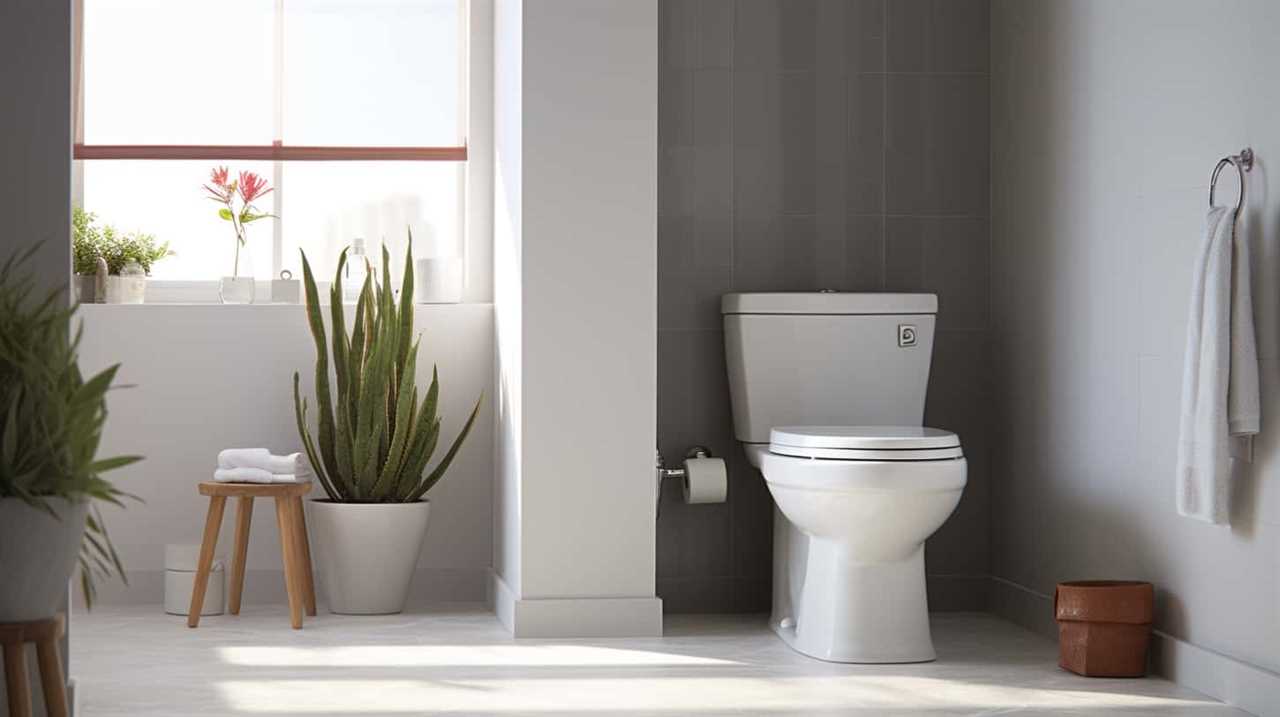
Embrace the challenge and conquer the flushing game with finesse.
With an impeccable eye for detail and a passion for bathroom-related, Ava leads our editorial team gracefully and precisely.
Under her guidance, Best Modern Toilet has flourished as the go-to resource for modern bathroom enthusiasts. In her free time, you might find Ava exploring antique shops and looking for vintage bathroom fixtures to add to her collection.
FAQ - Advanced Bathroom Queries
Best Toilet Brand

We have thoroughly searched the market to discover the top toilet brands for you. Whether it’s American Standard, Kohler, Toto, Delta, or Gerber, we have all the insider details you require.
Picture this: a bathroom oasis, where every flush is powerful, every seat is comfortable, and every fixture is reliable. Our expertise and unbiased research have led us to these top contenders.
Get ready to elevate your bathroom experience with the best toilet brand on the market.
Key Takeaways
- American Standard offers a wide range of options for residential and commercial use, while Gerber offers a wide range of models to cater to different needs and preferences.
- Gerber toilets are known for their reliability and durability, with minimal maintenance and repairs needed, while American Standard focuses on advanced flushing technology for efficient water usage.
- Gerber toilets are praised for their water efficiency and are certified by WaterSense for their water-saving capabilities, while American Standard is known for its innovative technologies like EverClean and WaterSense certification.
- Gerber toilets are generally more affordable compared to American Standard, and customers have praised Gerber toilets for their excellent performance and value for money.
American Standard
In our opinion, American Standard is the top choice for a reliable and high-quality toilet brand. When comparing American Standard’s toilet models for residential and commercial use, it’s clear that they offer a wide range of options to suit different needs.

For residential use, American Standard provides toilets with advanced flushing technology that ensures efficient water usage without compromising on performance. These models also come in various designs and sizes to fit any bathroom aesthetic.
On the other hand, American Standard’s commercial toilet models are specifically engineered to withstand heavy usage and have features like powerful flushes and easy maintenance. This demonstrates the brand’s commitment to providing durable and efficient solutions for both residential and commercial settings.
With a history spanning over 140 years, American Standard has continuously innovated in the toilet industry. They’ve introduced groundbreaking technologies such as EverClean, a surface that inhibits the growth of bacteria, mold, and mildew. This not only ensures a cleaner and more hygienic toilet but also reduces the need for frequent cleaning.
American Standard has also been at the forefront of water conservation efforts by developing toilets with WaterSense certification, which means they meet strict efficiency standards. This dedication to sustainability and innovation has solidified American Standard’s position as a leader in the toilet industry.

Kohler
When it comes to a reliable and high-quality toilet brand, Kohler stands out with its impressive range of models for residential and commercial use. Kohler toilets are known for their innovative features and superior performance.
Here are some key features that make Kohler toilets a popular choice among consumers:
- Efficient flushing system: Kohler toilets are equipped with powerful flushing mechanisms that ensure effective waste removal, preventing clogs and reducing water usage.
- Comfort height: Many Kohler models feature a comfort height design, which offers a chair-like seating position for added comfort and ease of use.
- Dual-flush technology: Some Kohler toilets come with dual-flush options, allowing users to choose between a full flush for solid waste and a partial flush for liquid waste, resulting in water savings.
- Easy installation: Kohler toilets are designed for easy installation, with clear instructions and user-friendly features that simplify the process.
- Wide range of pricing options: Kohler offers a variety of toilet models at different price points, making it possible to find a suitable option for every budget.
Whether you’re looking for efficiency, comfort, or affordability, Kohler toilets have a model to meet your needs.
Toto
Let’s now shift our focus to Toto, another leading toilet brand that offers exceptional features and performance. When comparing Toto to American Standard, Toto often comes out on top in terms of innovative technology and water efficiency.

Toto toilets incorporate advanced flushing systems like the Tornado Flush, which uses centrifugal force to create a powerful and efficient flush. In terms of design, Toto offers a wide range of styles and finishes to suit any bathroom decor.
When comparing Toto to Kohler, both brands are known for their quality and reliability. However, Toto is often praised for its superior flushing performance and water-saving features. With Toto, you can expect a toilet that not only looks great but also delivers exceptional performance.
Now, let’s move on to the next section and discuss the brand Delta.
Delta
We’ve found three major factors that make Delta a top toilet brand.
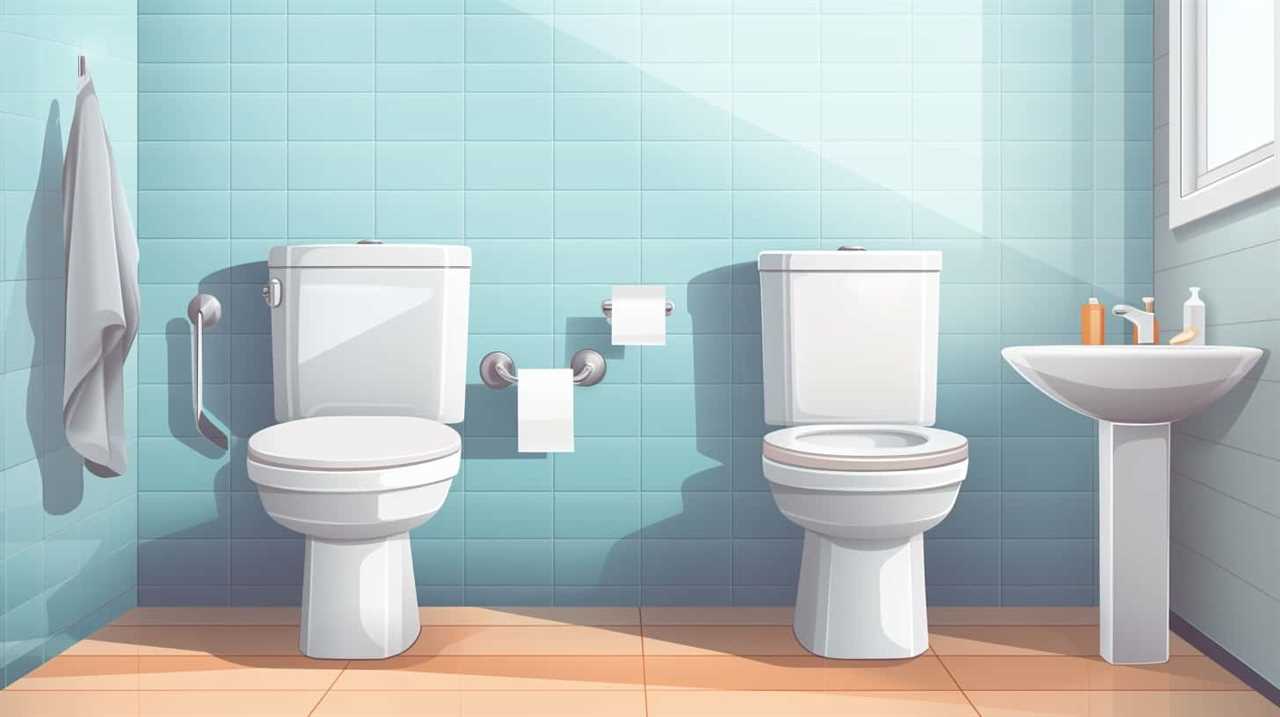
- Delta toilets are known for their exceptional durability and reliability. The materials used in their construction are of high quality, ensuring a long-lasting product.
- Delta toilets offer innovative features that enhance the user experience. From efficient flushing systems to easy-to-clean designs, Delta toilets are designed with the user in mind.
- Delta toilets are backed by a strong warranty and excellent customer support. This ensures that any issues or concerns are addressed promptly and efficiently.
When comparing Delta to other brands, it’s clear that Delta stands out in terms of quality, innovation, and customer satisfaction. Their toilets consistently outperform competitors in terms of durability and functionality.
With its superior features and outstanding performance, Delta proves to be a top choice for those seeking a reliable and high-quality toilet.
Now, let’s move on to discuss another top toilet brand: Gerber.
Gerber
Moving on to Gerber, another top toilet brand, we find that they offer their own unique set of features and qualities. Gerber toilets are known for their reliability, durability, and water efficiency. They have a wide range of models that cater to different needs and preferences. To provide a comprehensive understanding of Gerber toilets, let’s compare them to American Standard, one of their main competitors.

Below is a table that highlights the key differences between Gerber and American Standard toilets:
| Gerber | American Standard |
|---|---|
| Strong flush power | Powerful flush system |
| Water-saving technology | Efficient water usage |
| Affordable pricing | Higher price range |
Based on gerber toilet reviews, customers have praised Gerber toilets for their excellent performance and value for money. However, when comparing Gerber vs American Standard, it ultimately comes down to personal preference and specific requirements. Both brands have their own strengths and can be trusted for their quality craftsmanship.
Frequently Asked Questions
What Is the Average Lifespan of a Toilet Manufactured by American Standard?
On average, the lifespan of an American Standard toilet is around 15 to 20 years. To maximize its longevity, regular maintenance is crucial. Here are some tips: keep it clean, avoid using harsh chemicals, and promptly fix any leaks.
Does Kohler Offer Any Eco-Friendly or Water-Saving Toilet Models?
Yes, Kohler offers a range of eco-friendly and water-saving toilet models. They have innovative options that help conserve water while still providing efficient flushing capabilities. These toilets are a great choice for those looking to reduce their environmental impact.
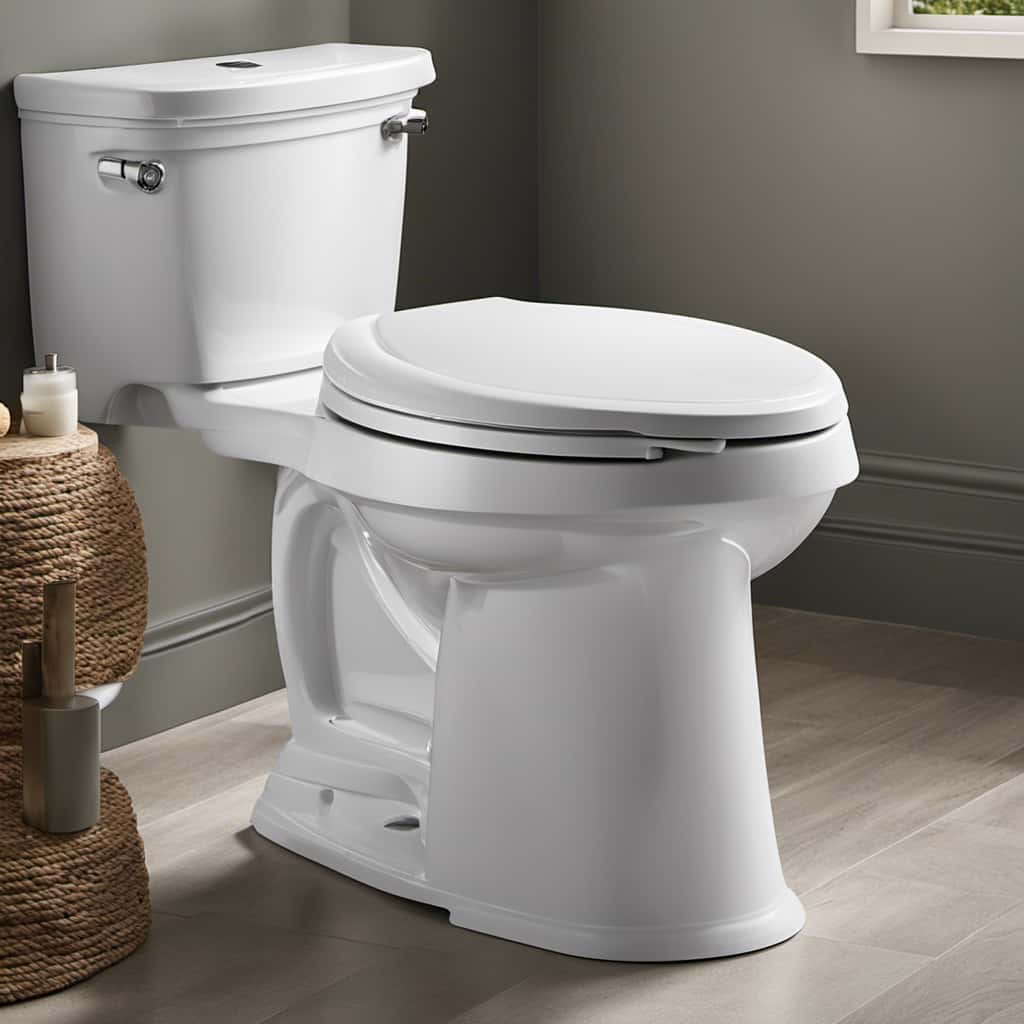
Are Toto Toilets Suitable for Small Bathrooms With Limited Space?
Toto toilets are suitable for small bathrooms with limited space due to their compact dimensions and space-saving options. They offer a range of toilet models designed specifically for maximizing space while maintaining functionality and comfort.
Can Delta Toilets Be Easily Installed by Homeowners Without Professional Assistance?
Delta toilets can be easily installed by homeowners without professional assistance. However, it is important to follow the Delta toilet installation guide and consider the pros and cons of DIY toilet installation.
What Is the Warranty Period Offered by Gerber for Their Toilet Products?
The warranty period offered by Gerber for their toilet products and customer reviews are important factors to consider when determining the quality and reliability of their toilets.
Conclusion
In conclusion, when it comes to choosing the best toilet brand, American Standard, Kohler, Toto, Delta, and Gerber stand out as top contenders.

Like a symphony of efficiency, these brands harmonize quality, durability, and innovation, ensuring a seamless bathroom experience.
Whether you seek sleek aesthetics, water-saving features, or reliable flushing power, these brands have got you covered.
So, go ahead, take the plunge and elevate your bathroom to new heights with a toilet from one of these trusted manufacturers.
With an impeccable eye for detail and a passion for bathroom-related, Ava leads our editorial team gracefully and precisely.
Under her guidance, Best Modern Toilet has flourished as the go-to resource for modern bathroom enthusiasts. In her free time, you might find Ava exploring antique shops and looking for vintage bathroom fixtures to add to her collection.
-

 Bathroom Enhancements2 months ago
Bathroom Enhancements2 months agoWill Hot Bath Lower Blood Pressure
-

 FAQ - Advanced Bathroom Queries3 months ago
FAQ - Advanced Bathroom Queries3 months agoWhich Countries Use Bidets the Most
-

 Reviews1 month ago
Reviews1 month agoLDian Smart Toilet Review [2024]
-

 Reviews2 months ago
Reviews2 months agoKohler Innate Smart Toilet Review [2024]
-

 Reviews2 months ago
Reviews2 months agoKohler NUMI 2.0 Smart Toilet Review [2024]
-

 Reviews2 months ago
Reviews2 months agoCANEST Smart Toilet Review: The Ultimate Bathroom Upgrade [2024]
-

 Toilet Types3 months ago
Toilet Types3 months agoAre Bleach Tablets Bad for Your Toilet
-

 Reviews2 months ago
Reviews2 months agoWoodbridge B0970S Smart Bidet Toilet Review [2024]






















